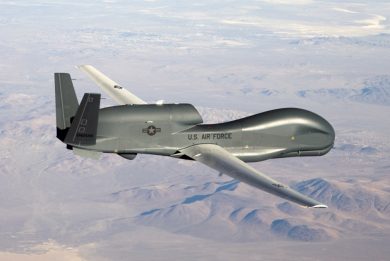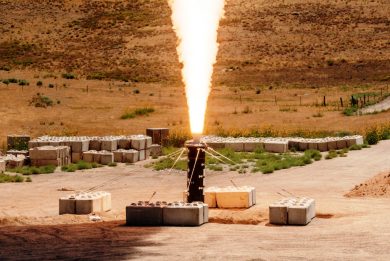Hanwha and Northrop Grumman to collaborate for Next-Generation Air Defense
Seoul, South Korea, June 23, 2025 – Hanwha Systems (CEO Jae-il Son) announced today that it has signed a memorandum of understanding (MOU) with leading U.S. defense contractor Northrop Grumman earlier this year to collaborate on technologies for Integrated Air and Missile Defense (IAMD) systems.
Under the agreement, the two companies will discuss core technologies related to integrated air defense command and control and explore new business opportunities in Korea.
Recent conflicts, including the Russia-Ukraine war and escalating tensions in the Middle East, have highlighted the increasing threat posed by advanced aerial assets such as fighter jets, ballistic missiles, and drones. In response, nations around the world are reinforcing their defense postures with highly integrated and adaptive air defense systems.
Northrop Grumman, a global leader in air and missile defense solutions, is the developer of the IBCS (Integrated Battle Command System), a cutting-edge command and control system designed to integrate various sensors and interceptors across domains—land, sea, and air. Currently being deployed by the U.S. Army and evaluated for expansion into Europe and beyond, IBCS enables seamless data sharing and optimized threat engagement across diverse weapon systems.
By connecting disparate radar and interceptor systems into a single networked command structure, IBCS allows for faster, more accurate responses to evolving aerial threats. It maximizes operational efficiency by selecting the most effective interceptor regardless of its origin or type.
Through this partnership, Hanwha Systems and Northrop Grumman aim to combine their respective strengths in radar and battle management technologies for more advanced and resilient air defense solutions.
Hanwha Systems possesses advanced command and control technologies that enable real-time integration between top-level command structures and weapon systems. These include the Korea Air and Missile Defense Operations Center (KAMDOC), the Master Control and Reporting Center (MCRC), and the Air Defense Command Control & Alert (ADC2A) system — all core elements of Korea’s indigenous air and missile defense command architecture. Leveraging its proven track record in developing such high-level battle management and engagement control systems, Hanwha Systems is now taking on the challenge of next-generation air defense development.
* KAMDOC: Developed in collaboration with the Agency for Defense Development between 2019 and 2022, this operations center supports Korea’s layered missile defense system with centralized command capabilities.
* MCRC: A critical air sovereignty asset that provides 24/7 surveillance and control of all aircraft operating in Korean airspace, including the vectoring of friendly fighters.
* Air Defense C2A: A cutting-edge command and control solution that enables integrated and synchronized air defense operations by fusing battlefield sensors, threat identification systems, and engagement platforms into a unified network.
As a leading provider of multi-layered air defense solutions, Hanwha Systems is responsible for the development and delivery of multi-function radars (MFRs) across a wide spectrum of systems, including LAMD, M-SAM, L-SAM.
* LAMD (Low Altitude Missile Defense), Korea’s “last line of defense” against long-range artillery threats;
* M-SAM Block-II (Cheongung-II), a medium-range surface-to-air missile system;
* L-SAM and L-SAM Block-II, Korea’s long-range air defense and high-altitude interception systems.
Through these programs, Hanwha Systems continues to drive innovation in integrated air and missile defense, strengthening national security and enhancing its global competitiveness.
Kenn Todorov, vice president and general manager, command & control and weapons integration, Northrop Grumman: “This MoU with Hanwha demonstrates our strong desire to collaborate with Korean industry in exploring opportunities to provide innovative and cost-effective air and missile defense solutions that enhance Korean homeland defense.”
Sungkyun Park, vice president and business director of Defense electronics division, added,
“Hanwha is undergoing bold transformation to become a leading global defense company. Our partnership reflects our ambition to lead the development of next-generation weapon systems and strengthen our position in the global market.”




